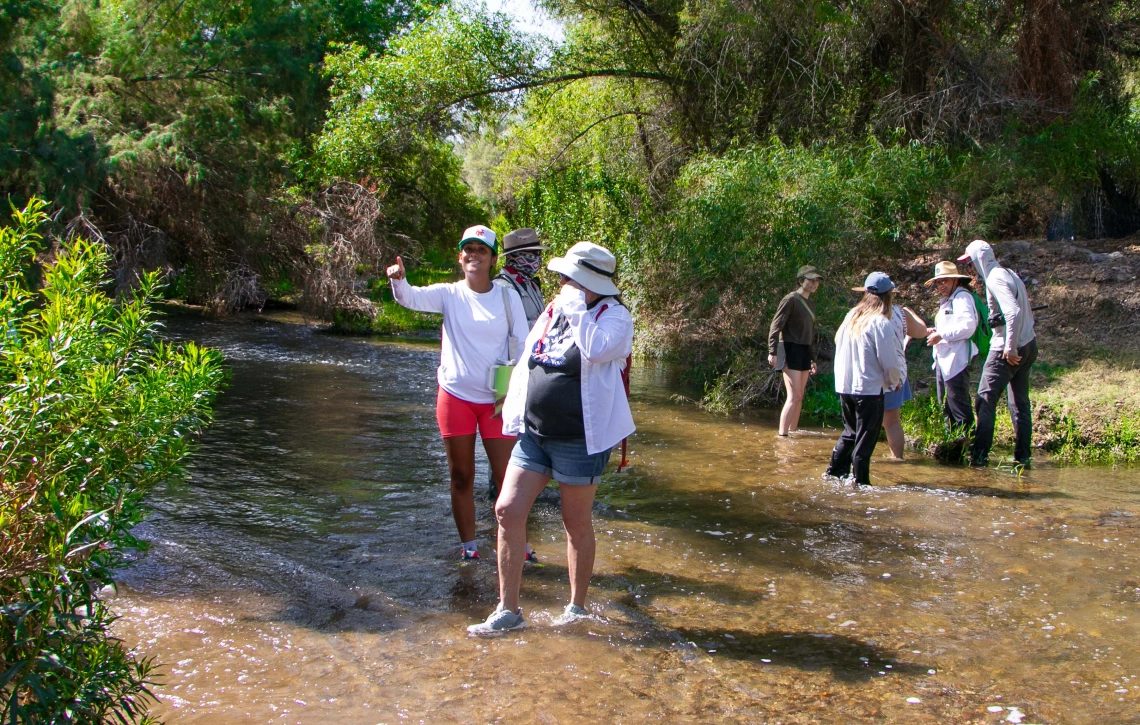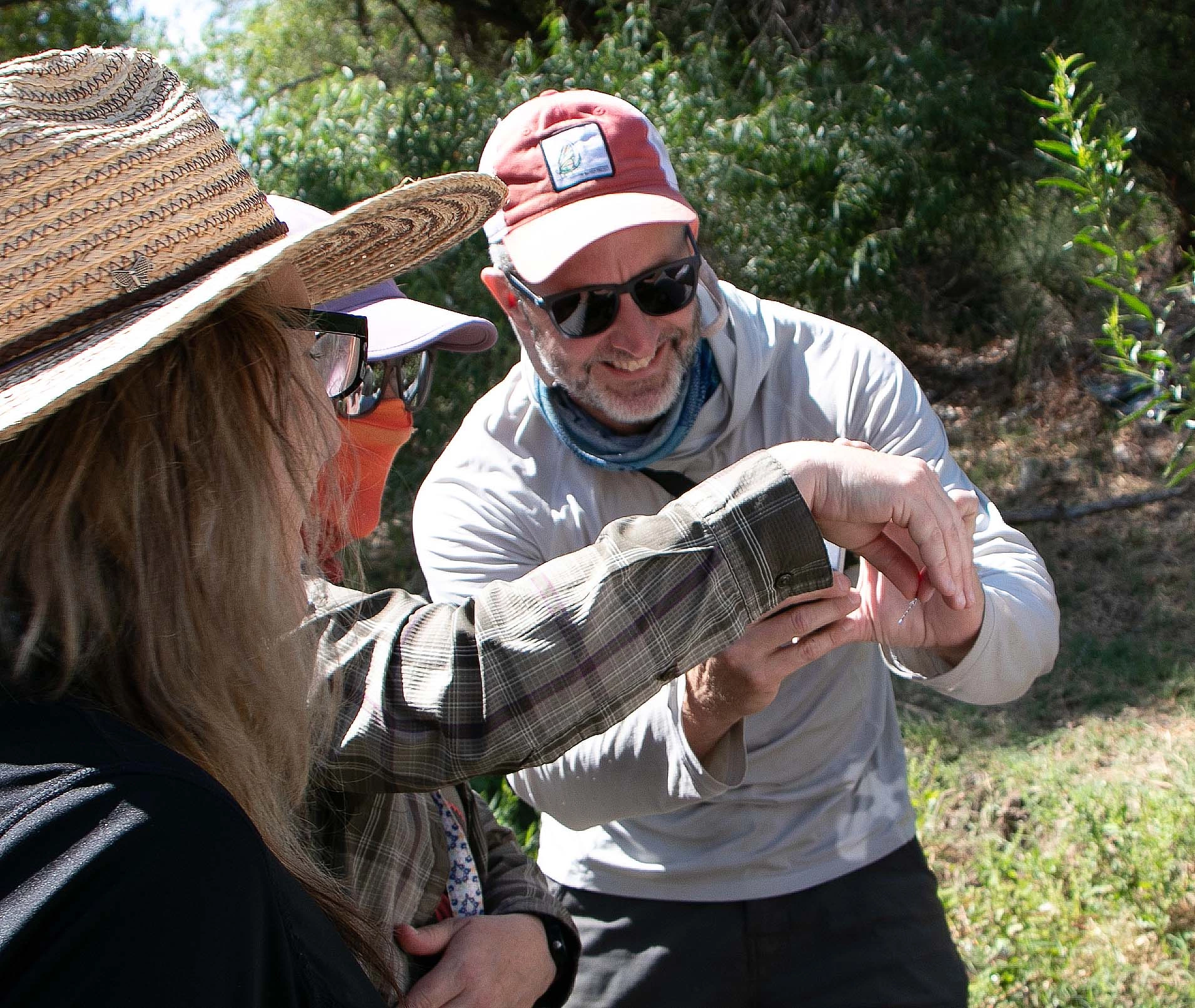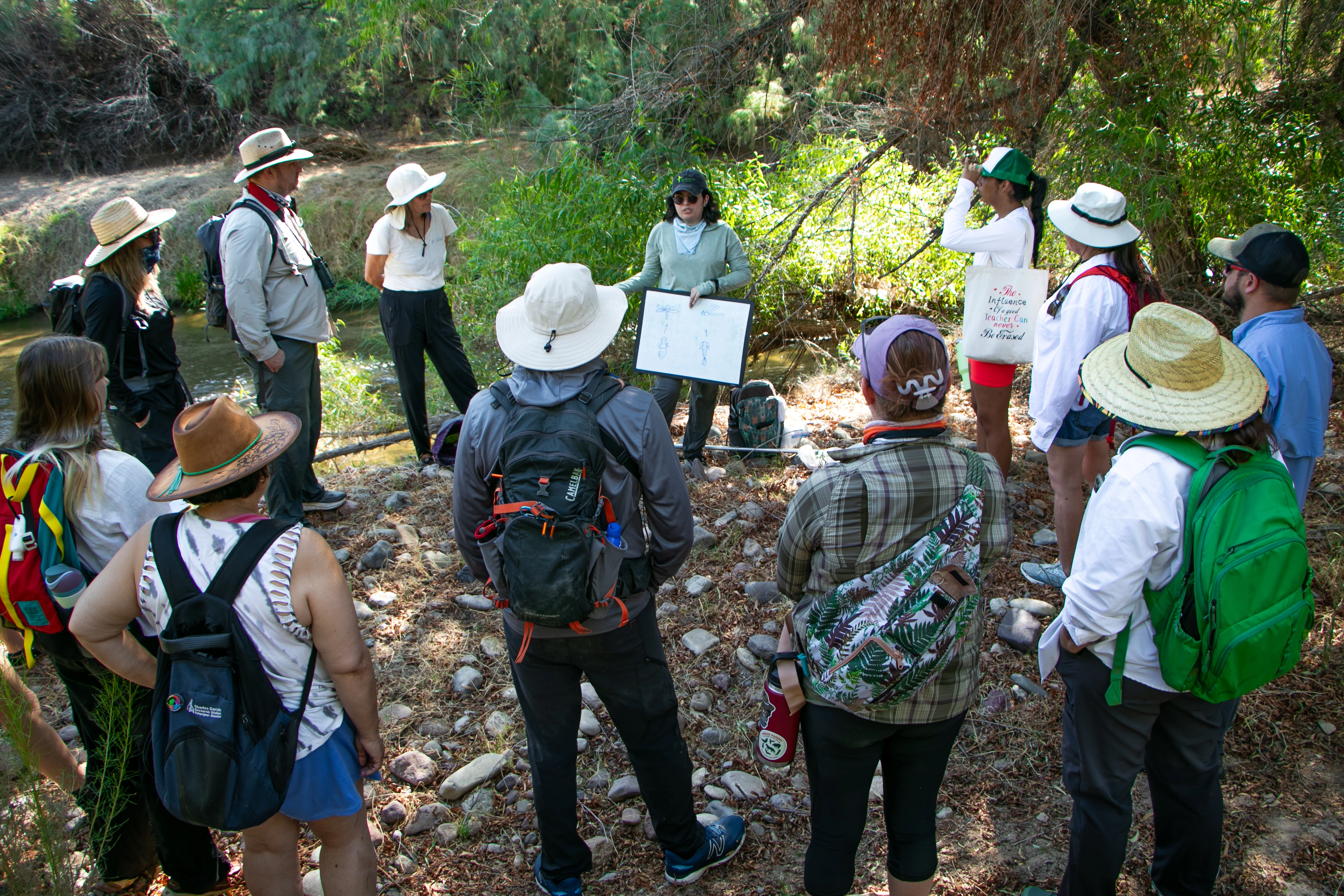Snapshot: Dive into desert stream research with the BIORETS program
The Biological Research Experience for Teachers Site (BIORETS) is an immersive summer research experience bringing science to life along the Santa Cruz River

Elena Lopez
Picture a summer day, wading through cool water, net in hand, chasing tiny bugs under the sun.
Cool water in the middle of the Sonoran Desert, though? Seems unlikely. But for middle and high school science teachers in the Tucson metro area, this isn't just a fantasy - it's reality, thanks to the Biological Research Experience for Teachers Site (BIORETS).

Michael Bogan, associate professor in the School of Natural Resources and the Environment, snaps a picture of a damselfly, while working in the Santa Cruz River with STEM educators from local communities.
Powered by the National Science Foundation, this program is transforming classrooms and reconnecting Tucson communities with the Santa Cruz River, once a dry riverbed that now supports aquatic and riparian plants and animals in the city. BIORETS helps teachers show their students how human innovation can restore ecosystems, even in a desert climate.
"Our long-term goal is to get the next generation of kids to start thinking of Tucson as a river city again, and to think about the Santa Cruz River when they think about green spaces and wildlife they want to protect," said Michael Bogan, an associate professor at the School of Natural Resources and the Environment.
BIORETS invites STEM teachers from grades 6-12, including those from the Tohono O'odham and Pascua Yaqui Nations, to a six-week, paid summer research experience. Teachers have the opportunity to work side-by-side with University of Arizona researchers and explore the Santa Cruz River's ecosystem, where treated wastewater has sparked a revival of aquatic life.
"The moment the water returned in 2019, the first thing Michael saw come back was dragonflies. They arrived immediately, and they were already mating and laying eggs," said Rocío Guzmán, who helps lead the class and is a Ph.D. student in Natural Resources. "Even though the goal of releasing treated wastewater was not ecological recovery, it was restoring some of the water flow, nature came back anyway."

Rocio Guzman in the field, teaching educators about dragonflies.
The program doesn't stop at the fieldwork.
Teachers receive financial and logistical support to design classroom projects, turning their river experiences into lessons that will root learning in a local environment for their students and making the Santa Cruz River into a living classroom. Networking is a plus, too - teachers can connect with professionals from Tucson Water, Tucson Bird Alliance and the National Phenology Network, building a web of resources to aid their teaching.
It's a hands-on science experience with a purpose to inspire students and foster a deeper connection to Southern Arizona's natural resources. If you're interested in grabbing a net and channeling your inner scientist, you can find out more about the program on their website.
